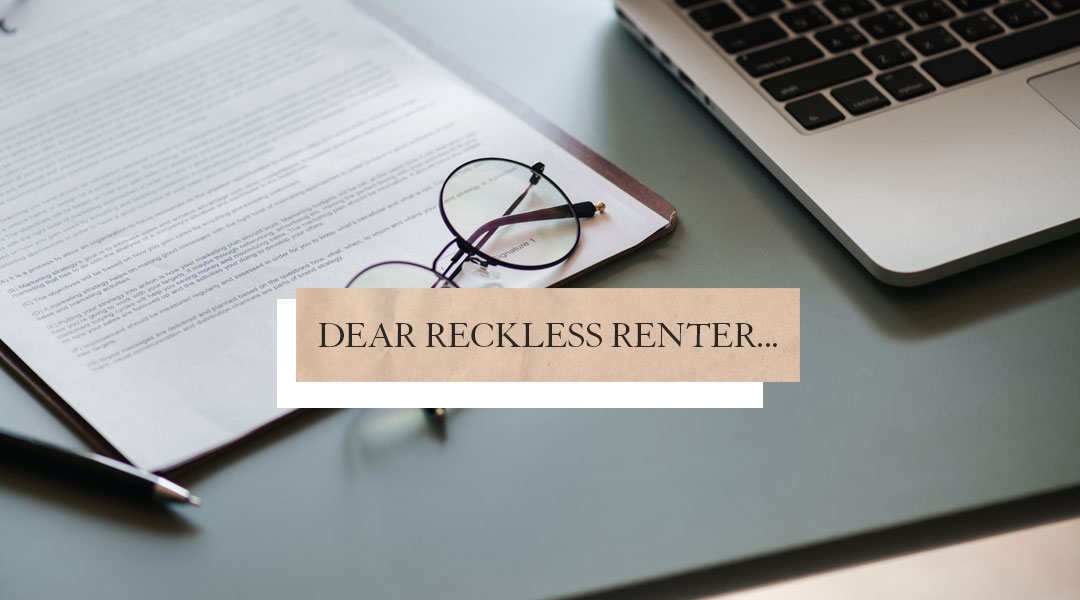keeping your unit/s in tip-top shape is a requisite before renting it out. The condo space and its quality is your product and you don’t want to sell a crappy one. While you might have spruced it up and found a renter, you don’t always get the best renters all the time who will respect your space. When renting out your condo, communicating penalties and damages to your tenants is a prerequisite. Here are 5 condo leasing tips on how to deal with reckless renters!
1 Be Clear And Straight To The Point
Always have a Loss/Damages Waiver included in your contract. When potential renters are viewing the unit, never neglect to explain the clauses you have in case damages are incurred and penalties imposed. Keep a list handy for the tenants’ reference of the most common damages and penalties with the corresponding amounts to each item. Attach amounts to each violation or damage to keep things clear between you and your tenant. Having all these in paper will make the penalty and damages dealing be a breeze.
2 Continually Develop The List Of Damages And Corresponding Fees
The list should grow as you gain experience from one tenant to the next. Familiarize yourself with the common damages and how best to fix them, so it is easier to assign or adjust amounts to items or parts of your unit that are usually damaged, as prices hike and rollback through time. Also, maintain a contacts list of suppliers in case the damages done to the unit are major. You can present to the tenant the quotations from your suppliers as the basis of your damage charges. Some common damages to condo units that you should charge are:
Holes drilled into walls without your permission
Dents in the fridge
Broken knobs in electric stoves or the AC
Broken dinnerware
Broken faucets/fixtures
Water damage to floors and doors
Broken small appliances
3 Explain When Penalties Are Applicable
Penalties are typically imposed when the tenant pays late. Most property management offices (PMO) charge 2% penalty for late payments in association dues, which you can apply to either cash and monthly deposits or post-dated checks (PDCs). Other penalties are for breaking rules, i.e. smoking in a specified non-smoking unit, neglecting to report damaged fixtures, bringing in additional guests without your consent as the owner, housing pets without your knowledge, etc. You can attach a fixed amount for each of these penalties.
4 Security Deposits Are Better Off Saved As Damage Deposits
Some tenants will request that for the last few months of their stay whether they can use the damage deposit as rental payment. If you trust them enough and they have shown a great deal of care for your unit, go ahead. However, it’s in your best interest to use security deposits as a safety net and money-in-hand to deal with unforeseen damages up until your tenant checks out and you’ve done that final check on the unit.
5 Be Firm And Stand Your Ground
Your tenants might contest or assert that they weren’t the ones who did the damages, but if you know you are in the right (that no one had access to the unit other than your tenant during the time the damage was done) then that’s all that should matter. There will be tenants who take a super defensive stance just to avoid paying damages, but just stick to your guns and present them the signed lease contract and the signed damages waiver to show their agreement to your terms.
Bottom line, it’s your property and your unit. If they’re responsible for the damages, then they should pay for it.
This story first appeared on CondoLiving Vol. 10 No.3 2015. Edits were made for CondoLiving.OneMega.com.
Read More Condo Leasing Tips
6 Budget-Friendly Tips from This 77-sqm Rental Condo
Condo-sharing 101: 4 Things To Consider with Your Future Roommate
8 Tips When Putting Up Your Own Condo Rental



